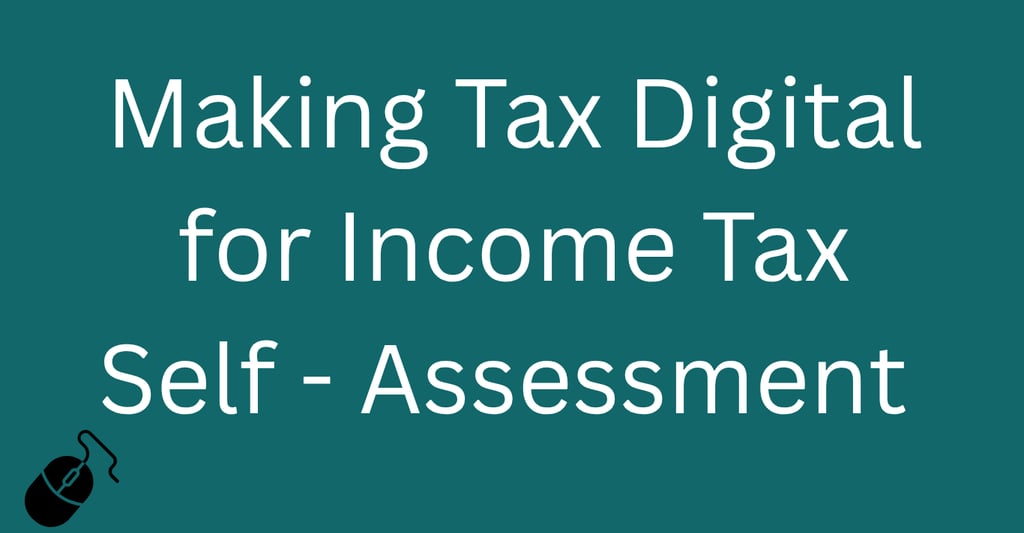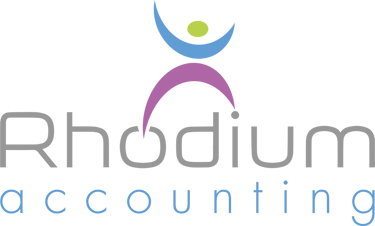Making Tax Digital for Income Tax - 10 Must Know Facts.
MAKING TAX DIGITAL FOR INCOME TAX


1. Start Date Confusion.
The Misconception: Many people believe MTD for Income Tax is already in force or starting imminently.
The Reality: MTD for Income Tax doesn't start until 6 April 2026, not 2024 as originally planned. The implementation has been delayed multiple times. This confusion often arises because MTD for VAT has been mandatory since 2019 for VAT-registered businesses above the threshold, leading people to assume income tax follows the same timeline.
Why This Matters: The delay gives taxpayers more time to choose and implement compatible software, plan and be ready so they are not caught out as failure to comply when mandated will lead to incurring penalties.
2. Income Thresholds Are Staggered.
The Misconception: There's a single income threshold that applies to everyone from the start.
The Reality: It's £50,000 for 2026, then £30,000 from April 2027. The government plans to expand it to those with incomes over £20,000 by the end of this Parliament. This phased approach means different taxpayers will be brought into the system at different times.
Why This Matters: If you're earning £35,000 from self-employment, you won't need to comply in 2026 but will from April 2027. This staggered approach allows HMRC to manage the transition more effectively, but it means taxpayers need to monitor their income levels carefully as they approach each threshold. Planning is crucial - if you expect income growth, you should prepare for MTD earlier rather than later.
3. It's Total Income, Not Just Business Income.
The Misconception: The thresholds apply separately to each income stream or business.
The Reality: The £50,000 threshold applies to your total qualifying business or property income combined. If you have two rental properties earning £30,000 each, you're above the threshold even though neither individually reaches £50,000. Similarly, if you have self-employment income of £35,000 and rental income of £20,000, you're caught by MTD, as your total income will be £55,000, which is above the threshold.
Why This Matters: Many portfolio landlords and people with multiple income streams may be caught unexpectedly. You need to aggregate all qualifying income sources when determining if you're above the threshold. This also affects business planning - splitting income across multiple entities won't help you avoid MTD if they're all qualifying income in your hands.
4. Quarterly Updates does not mean Quarterly Tax Payments.
The Misconception: Because you're submitting quarterly updates, you'll need to pay tax quarterly too.
The Reality: There are currently no plans to change Income Tax payment dates. You'll still pay tax according to existing payment on account rules (31 January and 31 July for most self-employed individuals), despite submitting quarterly digital updates. The reporting frequency and payment frequency remain separate.
Why This Matters: This is excellent for cash flow planning; the more frequent reporting will help with tax planning as you'll have a clearer picture of your tax liability throughout the year, potentially helping you save for payments or adjust your payments on account.
5. Annual Self Assessment Still Required.
The Misconception: MTD quarterly submissions replace the annual Self Assessment return.
The Reality: You need to submit 4 quarterly summaries AND still complete your annual Self Assessment Tax Return. So the fifth submission, the same as the Self Assessment Tax Retun is for the final calculations and will take into consideration reliefs and other adjustments.
Why This Matters: This doubles the compliance burden. You'll need to maintain both quarterly filings and annual return preparation. However, the annual return should become more straightforward over time as the basic profit and loss information will already be with HMRC. HMRC approved software should help automate the transfer of quarterly data to the annual return and make it relatively easy and simple.
6. Digital Records Must Be Kept From Day One.
The Misconception: You can keep paper records and just submit summaries digitally.
The Reality: You must keep digital records and use MTD-compatible software from the start of your accounting period. This means if you currently use paper records, spreadsheets, or non-compatible software, you'll need to change your entire record-keeping system. The requirement is for functional compatible software that can maintain digital records and submit directly to HMRC.
Why This Matters: This represents a fundamental change in business administration for many small businesses. You can't retrofit compliance - the digital record-keeping must be in place from day one of your MTD obligations.
7. Applies to Landlords Too.
The Misconception: MTD for Income Tax only affects traditional businesses and sole traders.
The Reality: It affects both sole traders AND landlords with qualifying property income. If your rental income exceeds the thresholds, you're required to comply with MTD whether you consider yourself a 'business' or not. This includes buy-to-let landlords, those renting out rooms, and commercial property owners.
Why This Matters: Many landlords don't see themselves as running a business and may not be aware of these requirements. Property rental is often more casual in its record-keeping, but MTD will require the same systematic digital record-keeping as any business. Landlords need to prepare software and processes just like any other business owner.
8. Compatible Software Is Mandatory.
The Misconception: You can submit MTD updates through HMRC's standard online portal or any accounting software.
The Reality: You must use MTD-compatible software that can connect directly to HMRC's systems via API. You cannot submit manually through HMRC's website. The software must be specifically approved for MTD and capable of digital record-keeping and submission and HMRC has confirmed it will not be providing a free Making Tax for Income Tax software like it has done in the past.
Why This Matters: This creates additional costs and learning curves for businesses currently using basic spreadsheets or paper records. The software requirement also means you need to factor in potential technical issues, software updates, and data backup considerations.
9. Partnerships Are Delayed Further.
The Misconception: Partneships income count as Qualifying income for MTD for income tax.
The Reality: While sole traders and property landlords start in 2026, partnerships have a different (later) timeline. The complexity of partnership taxation and the need for all partners to be coordinated has led to this being pushed back further. Each partner above the threshold will eventually need to comply, but the implementation date differs. This means that partnership income just like income from employment PAYE does not count as qualifying income under MTD rules yet.
Why This Matters: Partners need to understand that while their partnership might not be immediately caught, their individual obligations might differ based on their other income sources.
10. It Won't Increase Your Tax Bill.
The Misconception: MTD will result in higher tax payments.
The Reality: MTD for income tax is about procedural changes, not tax rate increases. The amount of tax you owe is still calculated using the same rules and rates. MTD changes how and when you report your income and expenses, but not how much tax you pay on that income.
Why This Matters: This misconception causes unnecessary anxiety among business owners. However, while your tax rates don't change, MTD might improve your tax planning through more regular reporting, potentially helping you optimize your tax position through better timing of expenses or income recognition. The increased compliance costs (software, time, potentially professional fees) are separate from your actual tax liability.
Key Takeaway: Most MTD misconceptions arise from confusion with MTD for VAT (already implemented) and multiple delays in the income tax implementation. The system is designed to modernize tax reporting rather than increase tax burdens, but it does require significant changes to business processes and record-keeping systems.
Still confused by it all and need someone to talk to? We can help. Simply complete our contact form here and we will be in touch within 24 hours
Blog content is for information purposes only and over time may become outdated as the tax landscape is constantly changing, although we do strive to keep it current and up to date. It is written to help you understand your taxes and is not to be relied upon as professional accounting, tax and legal advice. For additional help please contact our team, or a professional adviser.
